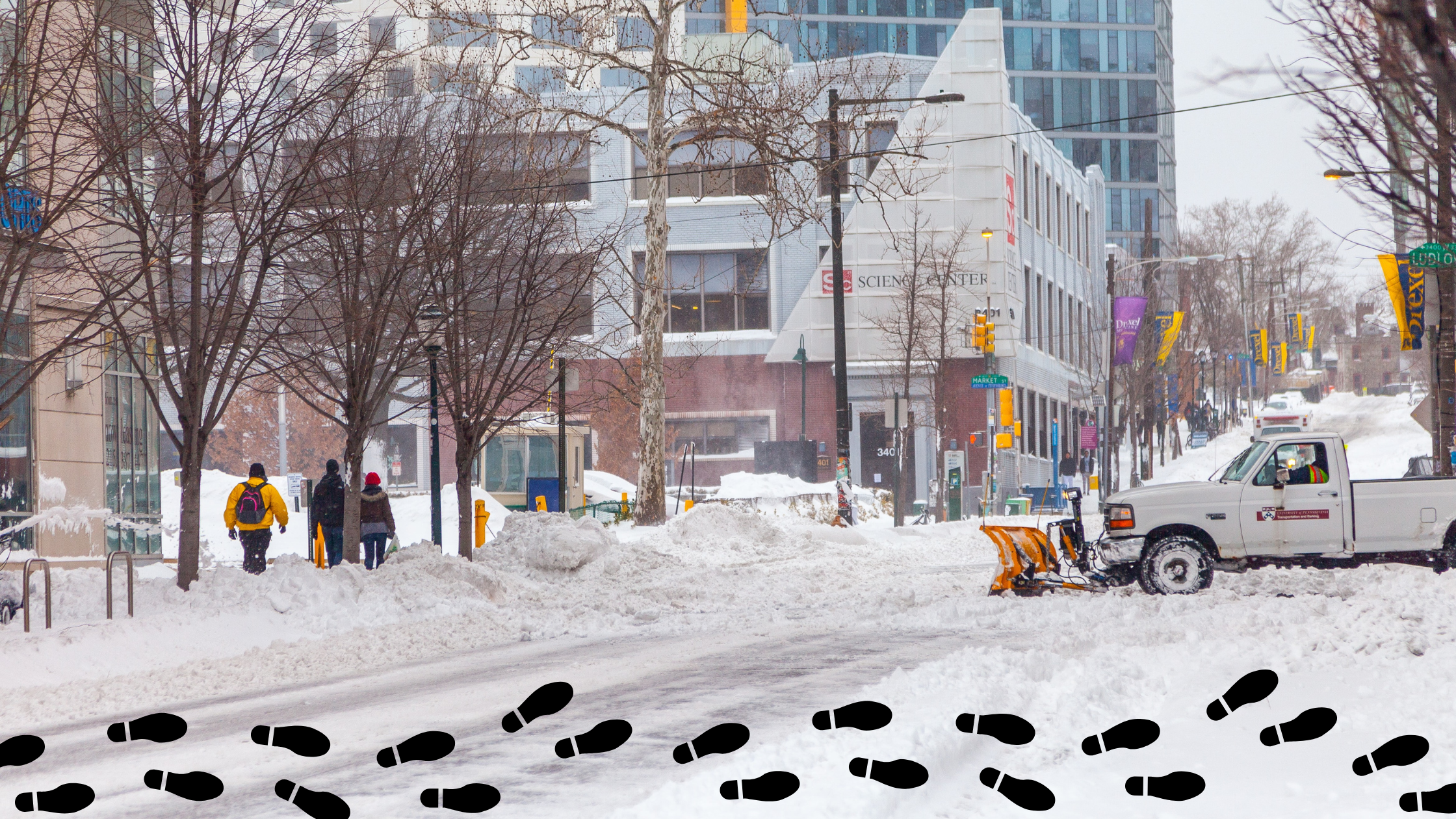Commercial Floor Cleaning: Your Guide to Winter Weather Protection
Break out the boots – your feet will need more traction. And your hallways will show more dirt, cause baby, it’s cold outside!
Northeast winters are known for their fluctuating temps. From frigid ice to muddy slush, you’re bound to track outdoor grime through your office space or facility. There’s no “perfect” substitute for commercial floor cleaning, but you can take action to protect against relentless wear and tear.
The Onslaught of Salt, Sand, and Snow
The Department of Transportation reports that roughly 896,000 tons of salt and 525,000 tons of anti-skid material are spread onto Philadelphia metro-area roadways yearly. Additionally, the Environmental Protection Agency (EPA) reports that rock salt accounts for approximately $5 billion in roadway damage in the U.S. Many high-traffic corridors are also blanketed with sand, a solvent that assists with tire traction during poor weather conditions. However, it’s all for the safety of Northeast travelers, where sand and salt are inescapable remedies for the winter weather elements.
In the end, the adage rings true – you’re hitting the pavement… hard. In fact, the walking distance from the car to the office lobby can be just as messy.
Tiny grains of sand and salt are packed into shoe treads and carried into your building, along with the snow, often scratching and stripping the finish on commercial flooring. The most common salts used on roads and sidewalks are sodium chloride (which warps wood and stains carpeting) and calcium chloride (which leaves behind a slippery film).
Warning Signs of Floor Damage
Watch your space to catch damage early and double up your defenses. Floor materials respond to the presence of salt and sand differently.
- Wood – Salt is a crystal-like structure that has hard, sharp edges. These spikes are ground under the soles of boots and scrape along your hardwood finish. These scratches may be microscopic at first, but you’ll notice them in high-traffic areas.
- Tile and Stone – Scraping from rocks or sand also impacts harder surfaces leaving them dull and dirty. After you mop, notice if your floors lack gloss and sheen.
- Carpet – You may vacuum up the debris, but that’s just the start of your woes. Deep carpet fibers can be compromised by snow, salt, and sand. Even consistent cleaning, if not thorough enough, will result in mold, mildew, and premature wearing of high traffic as well as common areas.
Commercial Floor Cleaning Tips: Stopping the Spread of Shoe Tread
A while back, Jidan Cleaning offered tips for winter weather safety and protection on the blog. Many of those tips apply to the first 20 feet inside your building’s entrance. These high-traffic zones have the potential to capture 80% of soils. Extra matting in these locations will collect grime and protect the rest of your facility from accelerated friction and fading.
Another way to prepare your floors is to have them resealed. This ensures weak spots in your finish aren’t “worse for wear” by the grip of winter. You can also invest in a neutralizing cleaner that removes films left behind without stripping your topcoat.
It’s important to note that if you’re cleaning with tools like mops and vacuums – the kinds that are not professional grade – you can do more harm than good. You may wind up spreading debris and creating more pervasive floor damage.
To maximize your floor care, partner with a professional commercial cleaning service like Jidan. A customized plan will ensure you’re prepared and protected for each season. And that’s how you’ll give snow, sleet, and slush “the boot”… pun intended.








